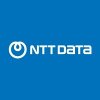
i
EXL
Service
Filter interviews by
EXL Service Data Scientist Interview Questions and Answers
12 Interview questions
Train a sentence classification model using labeled data, feature extraction, and machine learning algorithms.
Collect a labeled dataset of sentences with corresponding categories (e.g., positive, negative, neutral).
Preprocess the text data: tokenize, remove stop words, and apply stemming or lemmatization.
Convert sentences into numerical features using techniques like TF-IDF or word embeddings (e.g., Word2Vec, GloV...
Normal LSTM processes data in one direction, while bi-directional LSTM processes data in both forward and backward directions.
Normal LSTM reads input sequences from start to end, capturing temporal dependencies in one direction.
Bi-directional LSTM consists of two LSTMs: one processes the input sequence forward, and the other processes it backward.
This dual processing allows bi-directional LSTMs to capture context ...
Create a dictionary from a list where keys are unique numbers and values are their counts.
Use Python's built-in collections module, specifically Counter, to simplify counting occurrences.
Example: For the list [1, 2, 2, 3], the output should be {1: 1, 2: 2, 3: 1}.
Alternatively, use a loop to iterate through the list and build the dictionary manually.
LangGraph is a library for building AI agents that can understand and generate natural language.
LangGraph allows for the creation of conversational agents that can engage in dialogue.
It supports various natural language processing tasks, such as sentiment analysis and text summarization.
Example: Using LangGraph to build a chatbot that can answer customer queries in real-time.
The library integrates with machine lea...
What people are saying about EXL Service





Handling missing values is crucial for accurate data analysis and model performance.
1. Remove missing values: If the dataset is large, consider dropping rows or columns with missing values. Example: df.dropna() in pandas.
2. Imputation: Replace missing values with statistical measures like mean, median, or mode. Example: df.fillna(df.mean()) for mean imputation.
3. Predictive modeling: Use algorithms to predict and ...
Overfitting occurs when a model learns noise instead of the underlying pattern, leading to poor generalization on new data.
Overfitting happens when a model is too complex, capturing noise in the training data.
Example: A polynomial regression model with a high degree may fit training data perfectly but perform poorly on test data.
Signs of overfitting include a large gap between training and validation accuracy.
Tech...
Handling imbalanced datasets involves techniques like resampling, using different algorithms, and adjusting class weights.
Use resampling techniques like oversampling the minority class or undersampling the majority class.
Utilize algorithms that are robust to imbalanced datasets, such as Random Forest, XGBoost, or SVM.
Adjust class weights in the model to give more importance to the minority class.
Use techniques lik...
One way to measure model effectiveness without using confusion matrix metrics is by using area under the receiver operating characteristic curve (AUC-ROC).
Calculate the AUC-ROC score to evaluate the model's ability to distinguish between positive and negative classes.
AUC-ROC considers the entire range of classification thresholds and is insensitive to class imbalance.
Higher AUC-ROC score indicates better model per...
Blue score is not a term used in regression analysis.
Blue score is not a standard term in regression analysis
It is possible that the interviewer meant to ask about another metric such as R-squared or mean squared error
Without further context, it is difficult to provide a more specific answer
Bagging and boosting are ensemble learning techniques used to improve model performance.
Bagging involves training multiple models on different subsets of the training data and combining their predictions through averaging or voting.
Boosting involves iteratively training models on the same data, with each subsequent model focusing on the errors of the previous model.
Bagging reduces overfitting and variance, while b...
EXL Service Data Scientist Interview Experiences
10 interviews found
I appeared for an interview in Apr 2025, where I was asked the following questions.
- Q1. Introduce yourself
- Ans.
Data scientist with a strong background in statistics, machine learning, and data visualization, passionate about solving complex problems.
Educational Background: Master's degree in Data Science from XYZ University.
Technical Skills: Proficient in Python, R, SQL, and machine learning libraries like TensorFlow and Scikit-learn.
Professional Experience: Worked at ABC Corp, where I developed predictive models that improved ...
- Q2. Tell me about RAG project which you have mentioned in your resume.
- Q3. For what purpose are you using langchain in your RAG project?
- Ans.
LangChain enhances RAG projects by streamlining data retrieval and processing for improved AI model performance.
Facilitates integration of various data sources, such as APIs and databases, for seamless information retrieval.
Enables efficient document processing and indexing, allowing for quick access to relevant data.
Supports the creation of custom pipelines for data transformation, enhancing the quality of input for A...
- Q4. Are you having knowledge of langgraph or other library for AI agents?
- Ans.
LangGraph is a library for building AI agents that can understand and generate natural language.
LangGraph allows for the creation of conversational agents that can engage in dialogue.
It supports various natural language processing tasks, such as sentiment analysis and text summarization.
Example: Using LangGraph to build a chatbot that can answer customer queries in real-time.
The library integrates with machine learning...
- Q5. Can you tell me about models you have used for computer vision project?
- Ans.
I have utilized various models like CNNs, transfer learning, and segmentation techniques for diverse computer vision projects.
Convolutional Neural Networks (CNNs) for image classification tasks, e.g., classifying images of animals.
Transfer learning with pre-trained models like VGG16 and ResNet for fine-tuning on specific datasets, such as facial recognition.
Object detection using YOLO (You Only Look Once) for real-time...
- Q6. What about deployment of Machine Learning and Deep Learning models?
- Ans.
Deployment of ML/DL models involves integrating them into production systems for real-time predictions and decision-making.
Model Serving: Use frameworks like TensorFlow Serving or TorchServe to expose models as APIs.
Containerization: Deploy models using Docker to ensure consistency across environments.
Monitoring: Implement tools like Prometheus or Grafana to track model performance and data drift.
Scaling: Use cloud ser...
- Q7. How many teams are there within my office?
- Q8. Why you are looking for job change?
- Ans.
I'm seeking new challenges to grow my skills and contribute to innovative projects in a dynamic environment.
Desire for professional growth: I'm eager to expand my expertise in machine learning and data analysis.
Interest in innovative projects: I want to work on cutting-edge technologies, such as AI and big data solutions.
Cultural fit: I'm looking for a collaborative environment that values creativity and teamwork.
Caree...
- Q9. Why fine-tuning of models is required?
- Ans.
Fine-tuning adjusts pre-trained models to improve performance on specific tasks or datasets.
Enhances model accuracy by adapting to specific data distributions.
Reduces overfitting by leveraging knowledge from pre-trained models.
Saves time and resources compared to training from scratch.
Example: Fine-tuning a language model for sentiment analysis on product reviews.
Allows for transfer learning, where knowledge from one d...
- Q10. Tell me about LSTM.
- Ans.
LSTM (Long Short-Term Memory) is a type of recurrent neural network designed to learn long-term dependencies in sequential data.
LSTMs are used in natural language processing for tasks like language translation and sentiment analysis.
They can remember information for long periods, making them suitable for time series forecasting.
LSTMs mitigate the vanishing gradient problem common in traditional RNNs.
An example applicat...
- Q11. What is difference between Normal LSTM and bi-directional LSTM?
- Ans.
Normal LSTM processes data in one direction, while bi-directional LSTM processes data in both forward and backward directions.
Normal LSTM reads input sequences from start to end, capturing temporal dependencies in one direction.
Bi-directional LSTM consists of two LSTMs: one processes the input sequence forward, and the other processes it backward.
This dual processing allows bi-directional LSTMs to capture context from ...
- Q12. How you will train sentence classification model?
- Ans.
Train a sentence classification model using labeled data, feature extraction, and machine learning algorithms.
Collect a labeled dataset of sentences with corresponding categories (e.g., positive, negative, neutral).
Preprocess the text data: tokenize, remove stop words, and apply stemming or lemmatization.
Convert sentences into numerical features using techniques like TF-IDF or word embeddings (e.g., Word2Vec, GloVe).
Sp...
- Q13. Given a list of numbers, create dictionary where key is unique value and 'value of this key' is number of occurrences within the given list. Share your screen and write python code for this.
- Ans.
Create a dictionary from a list where keys are unique numbers and values are their counts.
Use Python's built-in collections module, specifically Counter, to simplify counting occurrences.
Example: For the list [1, 2, 2, 3], the output should be {1: 1, 2: 2, 3: 1}.
Alternatively, use a loop to iterate through the list and build the dictionary manually.
- Q14. How to deal with imbalanced dataset?
- Ans.
Imbalanced datasets can skew model performance; various techniques can help mitigate this issue.
Resampling techniques: Use oversampling (e.g., SMOTE) or undersampling to balance classes.
Use different evaluation metrics: Focus on precision, recall, and F1-score instead of accuracy.
Implement cost-sensitive learning: Assign higher misclassification costs to minority class instances.
Try ensemble methods: Techniques like Ra...
- Q15. What are your salary expectations, preferred location and notice period?
- Ans.
I'm seeking a competitive salary, flexible location, and a notice period of two weeks.
Salary expectations: Based on market research, I expect a salary in the range of $90,000 to $120,000, depending on the role and responsibilities.
Preferred location: I am open to remote work but would prefer a hybrid model with occasional office visits in New York or San Francisco.
Notice period: I am currently employed and would need t...
- Q16. Sort a given list of numbers without using in-built sort function. Need to write python code.
- Ans.
Implementing a sorting algorithm in Python to sort a list of numbers without using built-in functions.
Use the Bubble Sort algorithm: repeatedly swap adjacent elements if they are in the wrong order.
Example: For the list [5, 2, 9, 1], after one pass it becomes [2, 5, 1, 9].
Consider using the Selection Sort algorithm: find the minimum element and swap it with the first unsorted element.
Example: For the list [64, 25, 12, ...
Interview Preparation Tips
I applied via Company Website and was interviewed in Jun 2024. There were 2 interview rounds.
Basic aptitude , tech aptitude
(2 Questions)
- Q1. What is overfitting
- Ans.
Overfitting occurs when a model learns noise instead of the underlying pattern, leading to poor generalization on new data.
Overfitting happens when a model is too complex, capturing noise in the training data.
Example: A polynomial regression model with a high degree may fit training data perfectly but perform poorly on test data.
Signs of overfitting include a large gap between training and validation accuracy.
Technique...
- Q2. How to handle missing values
- Ans.
Handling missing values is crucial for accurate data analysis and model performance.
1. Remove missing values: If the dataset is large, consider dropping rows or columns with missing values. Example: df.dropna() in pandas.
2. Imputation: Replace missing values with statistical measures like mean, median, or mode. Example: df.fillna(df.mean()) for mean imputation.
3. Predictive modeling: Use algorithms to predict and fill ...
Skills evaluated in this interview
I appeared for an interview in Nov 2024.
(2 Questions)
- Q1. Project related questions
- Q2. Coding questions
I applied via Naukri.com and was interviewed in Feb 2024. There was 1 interview round.
(2 Questions)
- Q1. Cross validation
- Q2. How to handle imbalanced dataset
- Ans.
Handling imbalanced datasets involves techniques like resampling, using different algorithms, and adjusting class weights.
Use resampling techniques like oversampling the minority class or undersampling the majority class.
Utilize algorithms that are robust to imbalanced datasets, such as Random Forest, XGBoost, or SVM.
Adjust class weights in the model to give more importance to the minority class.
Use techniques like SMO...
Interview Preparation Tips
Skills evaluated in this interview
Statistics based questions
Basic case study any topic
(1 Question)
- Q1. Sql, python, ml based questions
I appeared for an interview in Nov 2022.

(3 Questions)
- Q1. Difference between bagging and boosting
- Ans.
Bagging and boosting are ensemble learning techniques used to improve model performance.
Bagging involves training multiple models on different subsets of the training data and combining their predictions through averaging or voting.
Boosting involves iteratively training models on the same data, with each subsequent model focusing on the errors of the previous model.
Bagging reduces overfitting and variance, while boosti...
- Q2. How would you measure model effectiveness without using any of confusion matrix metrics given the data is highly imbalanced
- Ans.
One way to measure model effectiveness without using confusion matrix metrics is by using area under the receiver operating characteristic curve (AUC-ROC).
Calculate the AUC-ROC score to evaluate the model's ability to distinguish between positive and negative classes.
AUC-ROC considers the entire range of classification thresholds and is insensitive to class imbalance.
Higher AUC-ROC score indicates better model performa...
- Q3. What is Blue score in Regression
- Ans.
Blue score is not a term used in regression analysis.
Blue score is not a standard term in regression analysis
It is possible that the interviewer meant to ask about another metric such as R-squared or mean squared error
Without further context, it is difficult to provide a more specific answer
Interview Preparation Tips
- Machine Learning
- Statistics
- Regression Analysis
Skills evaluated in this interview
I applied via Approached by Company and was interviewed before Sep 2023. There was 1 interview round.
(3 Questions)
- Q1. Statistics basic questions
- Q2. Linear regression vs logistics regression
- Ans.
Linear regression is used for continuous variables, while logistic regression is used for binary classification.
Linear regression is used to predict continuous values, such as predicting house prices based on square footage.
Logistic regression is used for binary classification, such as predicting whether an email is spam or not.
Linear regression assumes a linear relationship between the independent and dependent variab...
- Q3. Cross entropy vs binary cross
- Ans.
Cross entropy is a general term for loss functions used in classification tasks, while binary cross entropy is specifically used for binary classification tasks.
Cross entropy is a measure of the difference between two probability distributions, often used in multi-class classification tasks.
Binary cross entropy is a specific form of cross entropy used for binary classification tasks, where the output is either 0 or 1.
C...
Skills evaluated in this interview
I applied via Naukri.com and was interviewed before Jun 2023. There were 2 interview rounds.
(1 Question)
- Q1. Questions on Data Analysis
(1 Question)
- Q1. Questions to check the culture fit
I applied via Recruitment Consultant and was interviewed in Jul 2021. There were 3 interview rounds.
Interview Questionnaire
1 Question
- Q1. Use case for insurance domain
- Ans.
Predicting insurance claims using machine learning algorithms.
Fraud detection in insurance claims
Risk assessment for insurance policies
Pricing optimization for insurance products
Customer segmentation for targeted marketing
Predictive maintenance for insurance assets
Interview Preparation Tips
EXL Service Interview FAQs
Some of the top questions asked at the EXL Service Data Scientist interview -
Tell us how to improve this page.
EXL Service Interviews By Designations
- EXL Service Business Analyst Interview Questions
- EXL Service Consultant Interview Questions
- EXL Service Executive Interview Questions
- EXL Service Assistant Manager Interview Questions
- EXL Service Senior Associate Interview Questions
- EXL Service Senior Executive Interview Questions
- EXL Service Data Analyst Interview Questions
- EXL Service Associate Interview Questions
- Show more
Interview Questions for Popular Designations
- Data Analyst Interview Questions
- Associate Interview Questions
- Data Engineer Interview Questions
- Senior Data Scientist Interview Questions
- Data Science Intern Interview Questions
- Decision Scientist Interview Questions
- Data Scientist Intern Interview Questions
- Data Science Analyst Interview Questions
- Show more
Overall Interview Experience Rating
based on 9 interview experiences
Difficulty level
Duration
Data Scientist Interview Questions from Similar Companies
EXL Service Data Scientist Reviews and Ratings
based on 18 reviews
Rating in categories
Gurgaon / Gurugram,
Bangalore / Bengaluru
4-9 Yrs
Not Disclosed
|
Senior Executive
4.5k
salaries
| ₹2.5 L/yr - ₹7.5 L/yr |
|
Assistant Manager
3.3k
salaries
| ₹6 L/yr - ₹14 L/yr |
|
Senior Associate
2.6k
salaries
| ₹2.3 L/yr - ₹7 L/yr |
|
Lead Assistant Manager
2k
salaries
| ₹10.6 L/yr - ₹18.1 L/yr |
|
Executive
1.9k
salaries
| ₹1.7 L/yr - ₹5 L/yr |

Genpact

DXC Technology

Mphasis

Sutherland Global Services
- Home >
- Interviews >
- EXL Service Interview Questions
















